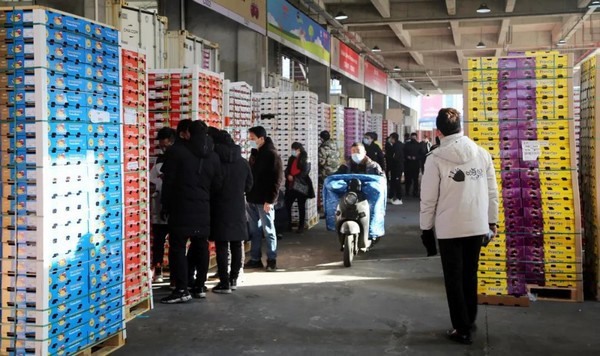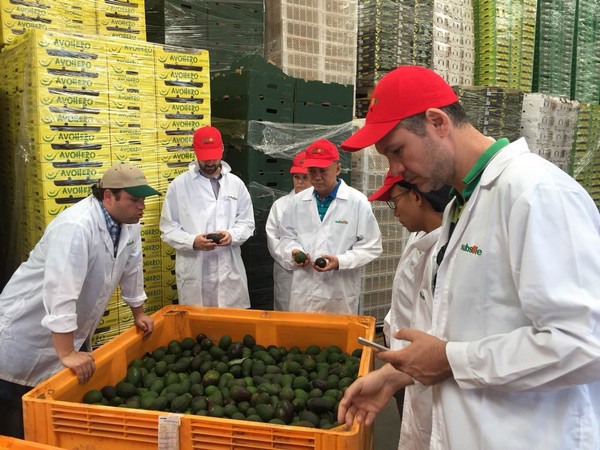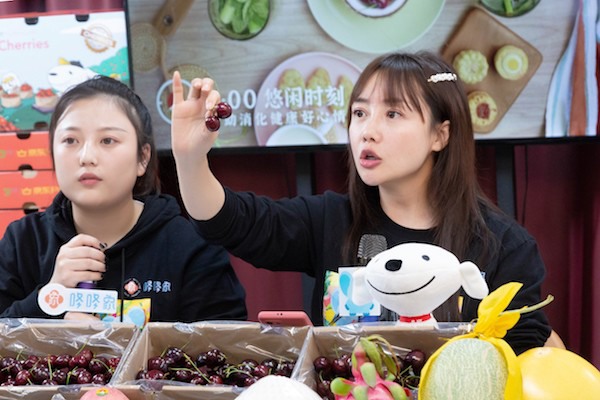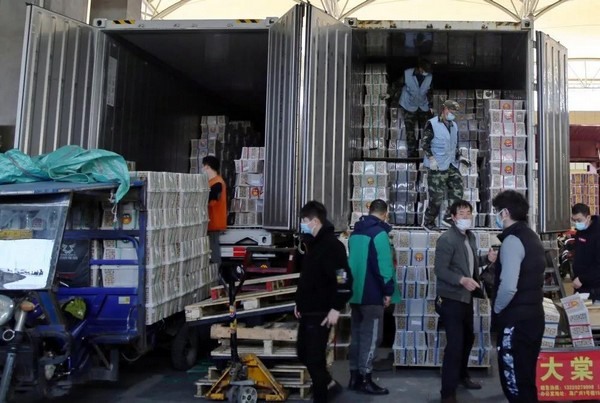China takes in a huge amount of imported fruits every year. However, the cost of shipping has been continuously rising for more than a year, there is a temporary shortage of shipping containers, and the Covid-19 pandemic is still raging. These factors undoubtedly present importers and exporters with a number of challenges. Some importers shared their experience and the market trends of imported fruits in China.

Global shipping capacity is a problem, importers reduce import volume to reduce risk
The problems with global shipping have been ongoing for more than a year now. In many areas exporters are unable to secure cargo space. Manager Zhang, a spokesperson for the import department at Zhejiang Xiangguo Trade, said: “Take Peruvian oranges as an example, we used to import around 5 shipping containers per week, and the supply volume was always stable. Now, however, the port has a backlog of shipping containers. Sometimes the 20 containers that were supposed to arrive over a period of 4 weeks all arrive at the same time. The unreliability of shipping creates a lot of uncertainty in the market. Even worse, the extended shipping period affects the product quality of our import fruit. Sometimes the fruit has begun to rot because the shipment was delayed and the shipping containers were stuck in port. Even a single rotten fruit can affect the entire crate and reduce the overall product quality.”
Apart from oranges and tangerines, imports of Peruvian avocados and several other fruits from Southern hemisphere experienced the same problem. A Shanghai-based importer of South American bananas said: “In addition to shipping problems, the sudden rise of Southeast Asian bananas also weakens the position of South American bananas in the Chinese market. We reduced our import volume of South American bananas by nearly 60% this year.”

Consumers pay more attention to imported fruit
The Chilean cherry season is coming soon. When talking about the expectation of this season, importers have confidence, but still they emphasised the fruit safety is one of the most important areas of focus by consumers.
The ‘cherry incident’ in January, when traces of Covid-19 were found on imported cherries, definitely had an impact on the market conditions of import fruit in China. Although experts urge Chinese consumers to look at the ‘cherry incident’ from a rational viewpoint, the consumer attitude has become more conservative. In addition, retailers have some worries. If a test in their store comes back positive, then there is a risk the entire stock will be destroyed and personnel will be isolated. Only the absolute lowest prices can convince retailers to take the risk. After the ‘cherry incident’, Chinese consumers have become stricter about the product quality of fruit, and especially imported fruit. They pay close attention to food safety issues.
“This incident was a warning shot for the fruit import industry. The Chinese market is rapidly developing, and market information quickly circulates on social media. The power of social media should not be underestimated. Questions about food safety, product quality, and health immediately spark spirited debates online,” said one cherry importer.
At the same time, experts in the import market call for more transparency: “When importers supply import fruit, they should also supply the consumers with information about the preventative measures, disinfection procedures, and various tests results that help guarantee food safety in the fruit import industry. Imported fruit meets strict standards, and information about procedures will help convince consumers that the fruit is closely monitored along every step of the way.”

Market demand for from South-East Asian fruit remains strong
Egyptian oranges, Chilean cherries, and Australian plums did not sell well in the Chinese market last year. There are several reasons why these fruits did not do well in Chinese wholesale markets. Their market prospects do not look good, and many importers suffered financial losses. Interestingly enough, this situation does not apply to imported fruit from Asia.
According to manager Ying, a spokesperson for Haiguangxing Fruit Wholesale Market: “Our trade volume last year still increased by 15% in comparison with the previous year. Our total trade volume was around 30,000 shipping containers. The growth primarily came from trade in Asian import products. However, as the Covid-19 pandemic is slowly brought under control, we also see a recovery for Western import products. Compared to last year the situation is gradually improving.”
Kingo spokesperson Chuk agreed: “Although we are in the middle of a pandemic, and the fruit market initially slowed down, I think there is still a lot of potential in the import fruit market. Now the outbreak of Covid-19 is largely under control in China, we see economic recovery in every industry. Consumption levels are also rising. However, market trends also depend on conditions in overseas markets where the outbreak of Covid-19 is still spreading. The market will be shaped not just by developments in distribution and customs procedures, but also by the confidence consumers have in imported fruit brands.”

A spokesperson for a wholesale market in Guangzhou explained that: “In recent years a growing number of countries have obtained permission to export fruit to the Chinese market. China’s annual import volume of fruit is impressive. However, we see that the popularity of a particular kind of import fruit generally does not last for more than five years.
"Take US oranges for example, they were selling very well a few years ago, but now their market share is rapidly dwindling. And this is not because China has taken steps to protect their domestic orange industry. There are two reasons for this development: first, domestic orange growers quickly pick up on popular trends and switch to similar orange varieties. Import oranges are expensive because of custom tariffs and transport costs, which means they can not compete with domestic oranges in terms of price. They are gradually pushed out of the market by domestic oranges. Second, importers all purchase the same imported fruit and flood the market. In the end they have to lower their prices to compete with other importers.”
According to Mr. Zheng, import fruit can only establish a lasting presence in the Chinese market if there is a distinct price advantage over domestic fruit, as is the case with Egyptian oranges, or if they take advantage of differences in production season, as is the case with Australian and South African oranges.
Mr. Huang, a spokesperson for Shanghai International Fruit Expo expressed a similar opinion: “Imported fruit from the southern hemisphere perfectly complements the Chinese market because their growing season falls in our off-season. Fruit growers in the northern hemisphere who want to stand out need to have top-quality fruit for reasonable prices, and on top of that they need to distinguish themselves in terms of fruit varieties.”
Shanghai International Fruit Expo
Mr Huang
